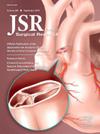使用机器学习预测成人体重增加:来自我们所有人研究项目的观察分析。
IF 1.8
3区 医学
Q2 SURGERY
引用次数: 0
摘要
肥胖症,定义为身体质量指数≥30 kg/m2,是美国一个主要的公共卫生问题。预防措施是必不可少的,但由于无法准确预测体重增加风险最高的个体,预防措施受到了限制。我们的目标是利用美国国立卫生研究院所有人的数据集开发准确的体重增加预测模型。我们假设同时使用电子健康记录和行为调查数据的机器学习模型将优于单独使用电子健康记录数据的模型。方法:使用All of Us数据集识别2008年至2022年间体重测量间隔2 y的18至70岁的成年人。有癌症、减肥手术或怀孕史的患者被排除在外。人口统计学、生命体征、实验室结果、合并症和调查数据(酒精使用障碍识别测试、患者报告结果测量信息系统身心健康评分)被纳入模型参数。在有或没有调查数据的情况下,开发了弹性网和XGBoost机器学习模型,以预测2年内体重增加≥10%。数据被分成训练样本(60%)和测试样本(40%),并使用10倍交叉验证对参数进行调整。采用受试者工作特征曲线下面积(auc)对其性能进行比较。结果:我们的队列包括34,715例患者(平均[SD]年龄50.9 [13.4]y;45.7%的白人;55.3%的女性)。在2年的时间跨度内,10.4%的队列患者体重增加≥10%。elastic net的auc为0.677 [95% DeLong置信区间0.665-0.688],XGBoost的auc为0.706[0.695-0.717]。纳入调查数据并没有提高可预测性,auc分别为0.681[0.669-0.692]和0.705[0.694-0.716]。结论:我们的机器学习体重增加预测模型性能一般,调查数据没有改善。其他“我们所有人”变量的加入,包括基因组数据,可能会在未来的研究中提供信息。本文章由计算机程序翻译,如有差异,请以英文原文为准。
Using Machine Learning to Predict Weight Gain in Adults: an Observational Analysis From the All of Us Research Program
Introduction
Obesity, defined as a body mass index ≥30 kg/m2, is a major public health concern in the United States. Preventative approaches are essential, but they are limited by an inability to accurately predict individuals at highest risk of weight gain. Our objective was to develop accurate weight gain prediction models using the National Institutes of Health All of Us dataset. We hypothesized that machine learning models using both electronic health record and behavioral survey data would outperform models using electronic health record data alone.
Methods
The All of Us dataset was used to identify adults between 18 and 70 ys old with weight measurements 2 y apart between 2008 and 2022. Patients with a history of cancer, bariatric surgery, or pregnancy were excluded. Demographics, vital signs, laboratory results, comorbidities, and survey data (Alcohol Use Disorder Identification Test, Patient-Reported Outcomes Measurement Information System physical and mental health scores) were included as model parameters. Elastic net and XGBoost machine learning models were developed with and without survey data to predict ≥10% total body weight gain within 2 y. The data were split into a training sample (60%) and a testing sample (40%), and parameters were tuned using 10-fold cross-validation. Performance was compared using area under the receiver operating characteristic curves (AUCs).
Results
Our cohort consisted of 34,715 patients (mean [SD] age 50.9 [13.4] y; 45.7% White; 55.3% female). Over a 2-y span, 10.4% of the cohort gained ≥10% total body weight. AUCs were 0.677 [95% DeLong confidence interval 0.665-0.688] for elastic net and 0.706 [0.695-0.717] for XGBoost. Incorporation of survey data did not improve predictability, with AUCs of 0.681 [0.669-0.692] and 0.705 [0.694-0.716], respectively.
Conclusions
Our machine learning weight gain prediction models had modest performance that was not improved by survey data. The addition of other All of Us variables, including genomic data, may be informative in future studies.
求助全文
通过发布文献求助,成功后即可免费获取论文全文。
去求助
来源期刊
CiteScore
3.90
自引率
4.50%
发文量
627
审稿时长
138 days
期刊介绍:
The Journal of Surgical Research: Clinical and Laboratory Investigation publishes original articles concerned with clinical and laboratory investigations relevant to surgical practice and teaching. The journal emphasizes reports of clinical investigations or fundamental research bearing directly on surgical management that will be of general interest to a broad range of surgeons and surgical researchers. The articles presented need not have been the products of surgeons or of surgical laboratories.
The Journal of Surgical Research also features review articles and special articles relating to educational, research, or social issues of interest to the academic surgical community.

 求助内容:
求助内容: 应助结果提醒方式:
应助结果提醒方式:


